Blog
Celebrate the 4th of July with Patriotic Flowers that Attract Pollinators
Have you ever wondered how you can make your 4th of July celebration even more special and environmentally friendly? What if you could combine patriotism with a love for nature by planting flowers that not only celebrate Independence Day but also attract bees and butterflies? Well, you’re in luck! In this article, we’ll dive into the best patriotic flowers that attract pollinators, making your garden both beautiful and eco-friendly. Whether you’re a seasoned gardener or just starting out, these plants will add vibrant colors to your garden while helping support essential pollinators.
Why Pollinators Are So Important for Your Garden
You might be wondering, Why should I focus on attracting pollinators like bees and butterflies to my garden? The answer is simple: pollinators are crucial for the health of your garden and the environment. Bees, butterflies, and other pollinators play a vital role in the reproduction of plants by transferring pollen from one flower to another, enabling the plants to produce seeds and fruits. Without these pollinators, many of the plants we love, including food crops, would struggle to survive.
But did you know that your garden could be a safe haven for these creatures? By planting specific flowers that attract bees and butterflies, you can create a sustainable environment that supports the ecosystem. The beauty of this is that you can celebrate the 4th of July with plants that reflect patriotic colors while also helping the environment!
Top Patriotic Flowers That Attract Pollinators
If you’re looking for flowers that not only brighten up your garden but also bring in the bees and butterflies, look no further. Here’s a list of the best patriotic flowers that are perfect for celebrating the 4th of July while supporting pollinators:
1. Red Zinnia
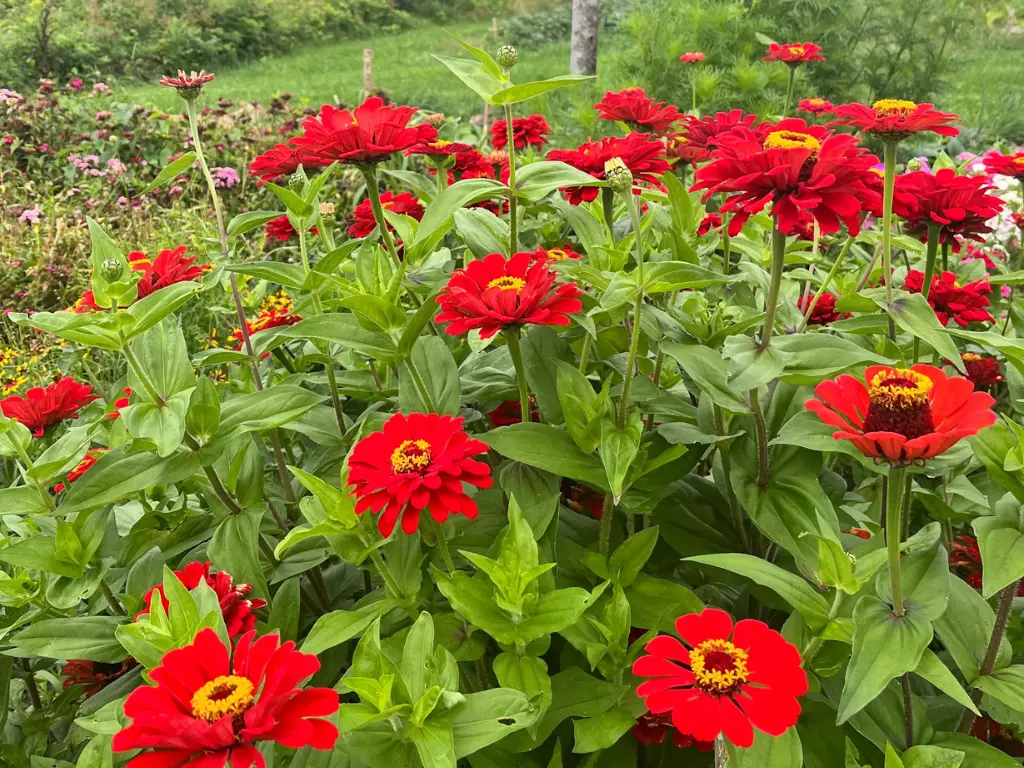
Zinnias are one of the easiest and most vibrant flowers to grow, making them a perfect choice for any gardener, whether you’re a beginner or experienced. Their bright red, orange, and pink blooms can be seen swaying in the summer breeze, bringing life and color to your garden. Zinnias not only add a patriotic touch to your outdoor space but also attract bees, butterflies, and even hummingbirds.
Why Zinnias?
-
Pollinator-Friendly: The large, flat blooms of zinnias are ideal for pollinators like bees, which find it easy to land on the flowers and collect nectar.
-
Drought-Tolerant: Zinnias are highly resilient to dry conditions, making them an excellent low-maintenance plant for gardeners in areas with less rainfall or water restrictions.
-
Long Blooming Period: Zinnias continue to bloom from early summer until the first frost, providing consistent food for pollinators over an extended period.
Growing Tips:
-
Zinnias thrive in full sun and well-drained soil, so choose a sunny spot in your garden for the best results.
-
They prefer moderate watering, but they can tolerate dry soil once established. Just be sure to keep them well-watered during the first few weeks after planting.
2. White Echinacea (Coneflower)
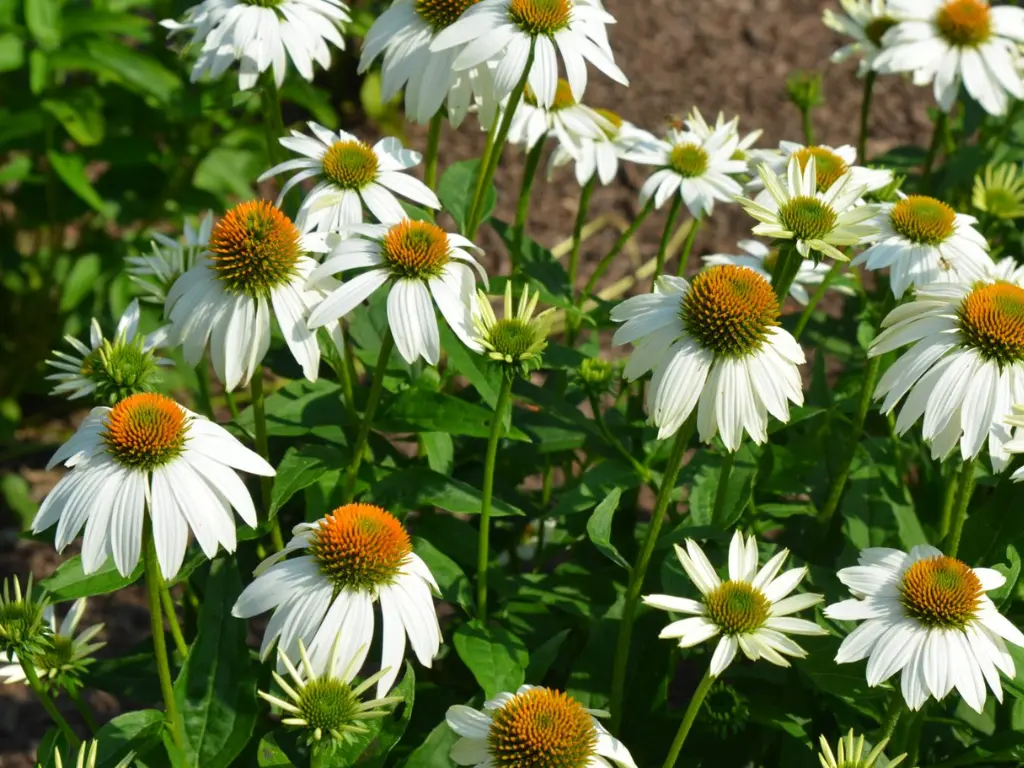
Echinacea, commonly known as coneflower, is not only a stunning addition to any garden but also one of the best plants for attracting pollinators. With its elegant white petals and striking purple center, it’s a great way to complement the red and blue blooms in your patriotic garden. This native perennial is renowned for being highly attractive to both bees and butterflies.
Why Echinacea?
-
Bee and Butterfly Magnet: The large, daisy-like flowers of coneflowers are rich in nectar, making them irresistible to pollinators, especially honeybees, bumblebees, and butterflies.
-
Resilient and Low-Maintenance: Echinacea thrives in a wide range of soil types and conditions, making it perfect for both beginner and seasoned gardeners. It’s drought-resistant once established and requires minimal care.
-
Medicinal Qualities: In addition to its beauty, echinacea is also known for its medicinal properties, particularly its ability to boost the immune system. So, it’s not only a beautiful plant for your garden but also useful in your herbal medicine cabinet.
Growing Tips:
-
Echinacea does best in well-drained soil and full to partial sun. It’s a great plant for areas with hot summers, as it’s incredibly heat-tolerant.
-
Deadheading spent flowers will encourage more blooms, and this plant will come back year after year, making it a great investment in your garden.
3. Blue Lobelia

Lobelia is a fantastic plant to add a splash of cool blue to your garden, contrasting beautifully with red and white flowers. Its vibrant blue blossoms are highly attractive to pollinators, particularly bees and butterflies, thanks to their tubular shape, which provides easy access to nectar. It’s perfect for those looking to include a “blue” element in their patriotic garden while supporting pollinator health.
Why Lobelia?
-
Pollinator Attraction: The tubular shape of Lobelia’s flowers makes them particularly appealing to both bees and butterflies, which are able to reach the nectar easily.
-
Versatile and Attractive: Lobelia can be planted in containers, hanging baskets, or as a border plant, making it an excellent choice for any garden layout.
-
Extended Bloom Time: Lobelia continues to bloom throughout the summer months, offering continuous nectar for pollinators.
Growing Tips:
-
Lobelia thrives in moist, well-drained soil and should be placed in areas with partial sun, especially in hotter climates.
-
It requires regular watering, so be sure to keep the soil consistently moist but not waterlogged.
4. Red Hot Poker (Kniphofia)
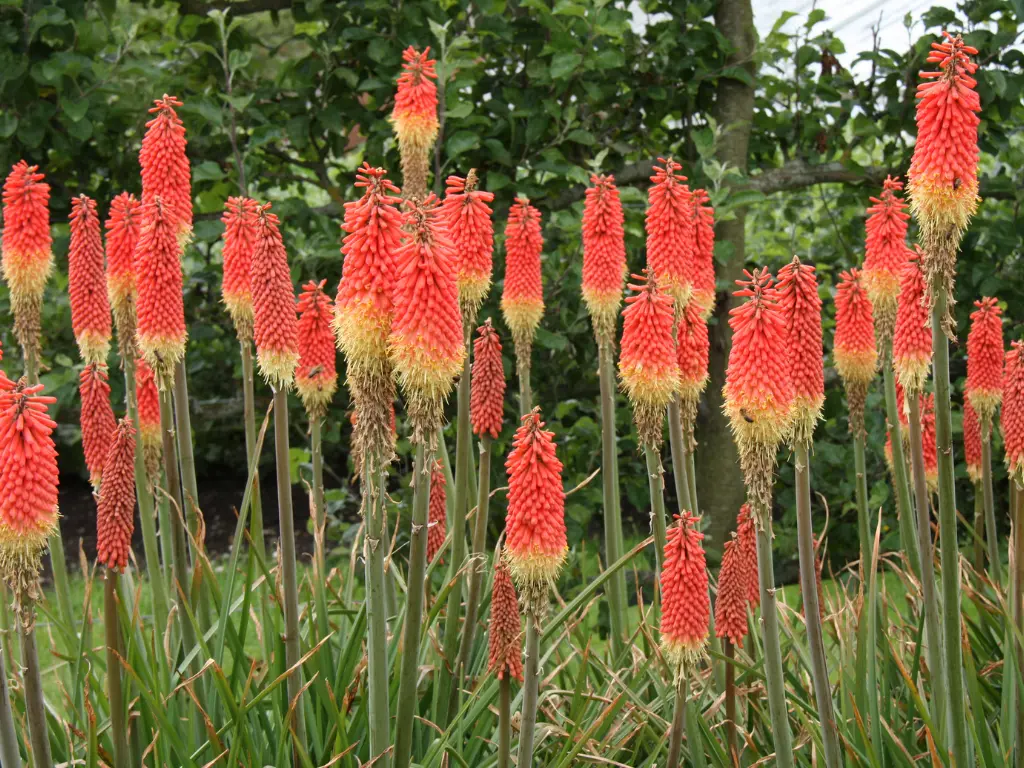
The striking Red Hot Poker plant is a showstopper in any garden with its vibrant, flame-like flowers that range from red to orange. Known for their dramatic look, these plants not only add height and interest to your garden but also attract a wide range of pollinators, including bees and hummingbirds.
Why Red Hot Poker?
-
Pollinator Appeal: The tubular flowers of the Red Hot Poker are perfect for bees and hummingbirds, who enjoy sipping from them for nectar.
-
Low Maintenance: These plants are relatively easy to care for once established and can tolerate a range of growing conditions, including drought. Their tough nature makes them a good fit for busy gardeners.
-
Striking Appearance: These plants offer a unique visual impact, with their bold colors and spiky flowers. They provide a pop of color in your garden, making them the ideal centerpiece for patriotic garden designs.
Growing Tips:
-
Red Hot Pokers thrive in full sun and require well-drained soil. They do well in hotter climates, making them perfect for sunny gardens.
-
These plants are drought-tolerant once established, but they do need regular watering during their first growing season to get established.
5. Butterfly Bush (Buddleia)
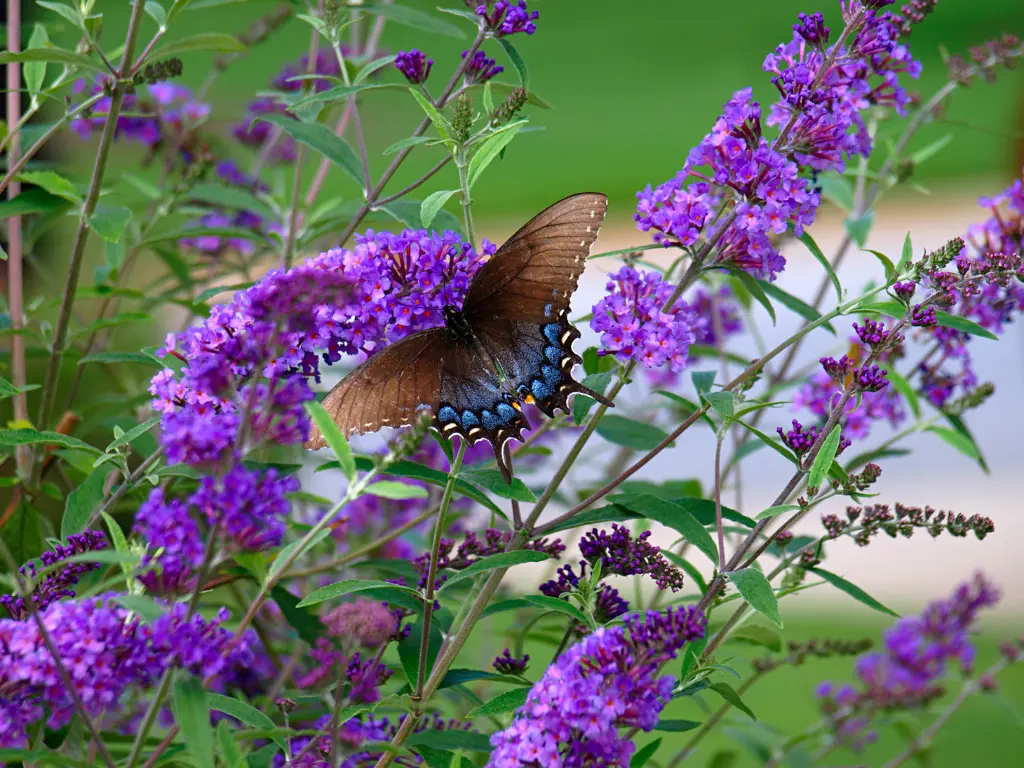
As its name suggests, the Butterfly Bush is a magnet for butterflies, and it doesn’t disappoint. With clusters of fragrant flowers in shades of purple, white, and blue, this shrub will not only make your garden smell wonderful but will also attract an abundance of pollinators.
Why Butterfly Bush?
-
Pollinator Paradise: Butterfly Bush is especially known for its ability to attract a wide variety of butterflies, but it also draws in bees. The dense clusters of flowers provide plenty of nectar for these creatures.
-
Long-Lasting Blooms: The flowers bloom from late spring to fall, offering a continuous source of nectar for pollinators. This makes the Butterfly Bush a great investment for a garden that needs pollinator-friendly plants throughout the growing season.
-
Easy to Grow: This hardy plant thrives in a variety of conditions, making it a great choice for gardeners of all experience levels.
Growing Tips:
-
Butterfly Bush prefers full sun and well-drained soil. It’s best planted in a spot where it can get plenty of light throughout the day.
-
It’s a relatively low-maintenance plant, but regular pruning after blooming will help encourage more flowers and keep the plant in shape.
How to Create a Pollinator-Friendly Garden for the 4th of July
Now that you know which patriotic flowers to include in your garden, it’s time to think about how to create the ideal environment for pollinators. Here are some simple tips to help you design a pollinator-friendly garden that will thrive this 4th of July:
-
Plant in Groups:
Pollinators are more likely to visit your flowers if they are planted in clusters. Grouping your flowers together will create a vibrant patch that will attract bees and butterflies from all around. -
Include Native Plants:
Native plants are naturally suited to your local climate and soil, making them easier to care for and more beneficial to local pollinators. In addition to the patriotic flowers mentioned earlier, consider adding other native species to your garden. -
Provide Water Sources:
Bees and butterflies need water to survive, so adding a shallow birdbath or small pond to your garden will help attract them. Make sure the water is shallow enough for pollinators to drink safely. -
Avoid Pesticides:
While it’s tempting to spray for pests, pesticides can be harmful to bees and other pollinators. Opt for natural pest control methods or try companion planting to keep your garden thriving without harming the insects you’re trying to attract. -
Choose a Variety of Blooms:
Different pollinators are attracted to other types of flowers. To ensure your garden is bustling with bees and butterflies, choose a variety of plants that bloom at different times throughout the summer.
Patriotic Garden Design Ideas
Creating a garden that celebrates the 4th of July doesn’t mean you have to go overboard with red, white, and blue decorations. Instead, you can incorporate these colors naturally through your choice of flowers. Here are some ideas for designing a patriotic garden:
-
Red, White, and Blue Color Scheme:
Stick to a color palette of red, white, and blue flowers to reflect the colors of the American flag. Combine the flowers mentioned above to create a beautiful, cohesive look that celebrates Independence Day. -
Decorative Accents:
Add subtle patriotic accents, such as flags, lanterns, or even a small wooden sign that reads “Welcome, Pollinators!” to tie the theme together. -
Container Gardens:
If you have limited space, consider creating container gardens filled with patriotic flowers. You can easily move these around to create a festive atmosphere wherever you need it.
Conclusion
This 4th of July, why not go beyond the fireworks and BBQs and create a garden that celebrates both patriotism and pollination? By planting flowers that attract bees and butterflies, you can support local ecosystems, make your garden a vibrant part of your home, and make a meaningful contribution to the environment.
Whether you’re a beginner or a seasoned gardener, these patriotic flowers are sure to add beauty and sustainability to your garden. So grab your gardening gloves, and let’s make this Independence Day a celebration of both freedom and the natural world!
You may like:
- Top Pollinator-Friendly Plants to Bring Vibrancy to Your Garden
- Glencoe Raspberry Care in Summer: The Ultimate Guide to Watering, Fertilizing, and Pruning in June
- 5 Perennials to Plant in May for Summer Splendor
Frequently Asked Questions
-
What are the best flowers to attract bees and butterflies for the 4th of July?
-
Zinnias, Echinacea, Lobelia, and Butterfly Bush are all excellent choices for attracting bees and butterflies while celebrating the 4th of July.
-
-
Can I plant pollinator-friendly flowers in containers?
-
Yes, you can plant pollinator-friendly flowers in containers. Just ensure that the plants get enough sunlight and water, and choose varieties that thrive in pots.
-
-
Why are bees and butterflies important for my garden?
-
Pollinators, such as bees and butterflies, play a crucial role in plant reproduction, leading to healthier and more productive gardens.
-
-
How can I make my garden more attractive to bees and butterflies?
-
Plant a variety of flowers in clusters, provide water sources, and avoid using pesticides to create a welcoming environment for pollinators.
-
By following these tips and using the right plants, you can create a patriotic garden that not only celebrates Independence Day but also helps support the vital pollinators that sustain our ecosystem. Happy gardening, and happy 4th of July!

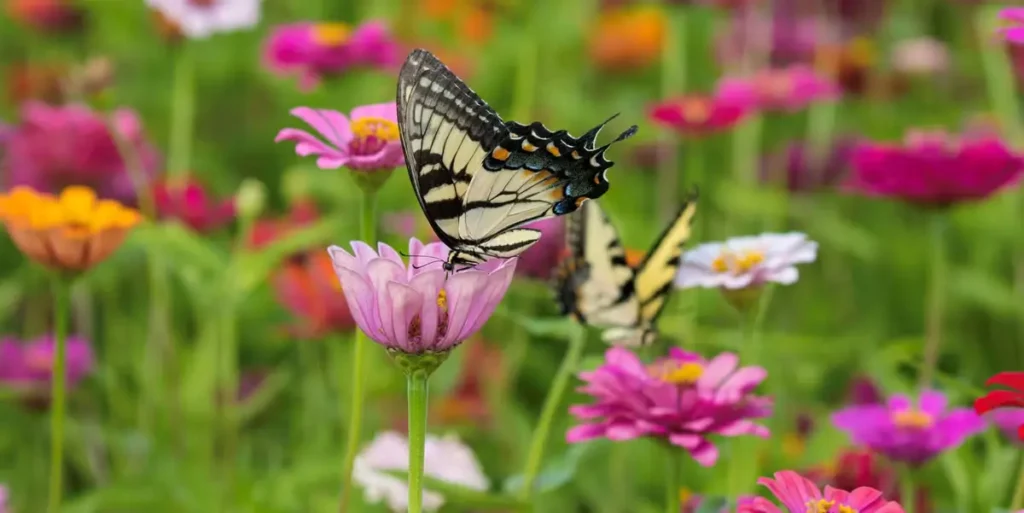
Swedish Ivy Care: How to Grow a Healthy, Thriving Plant
Have you ever looked at your Swedish Ivy and wondered why the leaves are turning [...]
Nov
Avoid These 10 Garlic Planting Mistakes for Bigger, Healthier Bulbs
Growing garlic at home is one of the most satisfying things a gardener can do [...]
Nov
How to Prevent Christmas Cactus Bud Drop: Tips for a Healthy Bloom
Have you ever noticed your beautiful Christmas cactus (Schlumbergera) starting to lose its buds just [...]
Nov
Discover 7 Stunning Types of Night-Blooming Cereus
Have you ever waited for a flower that only opens at night and then disappears [...]
Nov
How to Propagate Comfrey from Root Cuttings: Easy Guide for Beginners
If you’re looking to grow your own healthy comfrey plants without spending too much, propagating [...]
Nov
10 Best Christmas Plants to Gift This Holiday Season
The holiday season is finally upon us, and if you’re searching for the perfect gift [...]
Oct